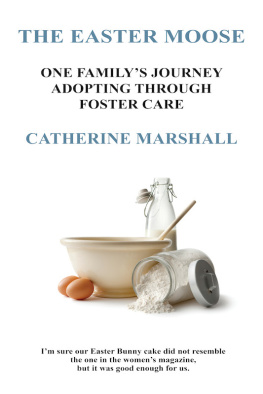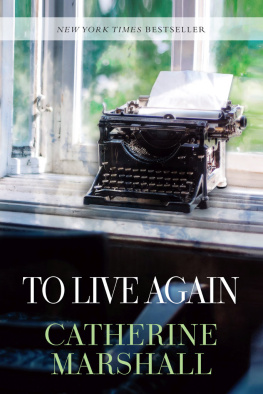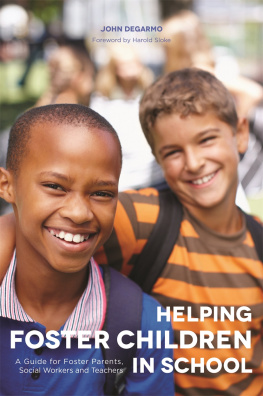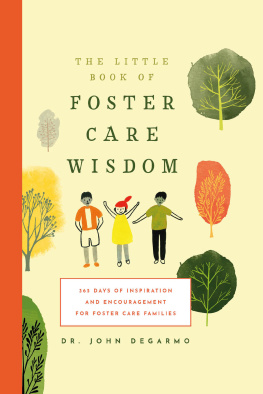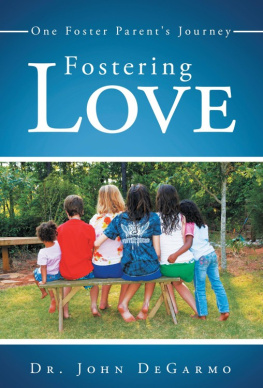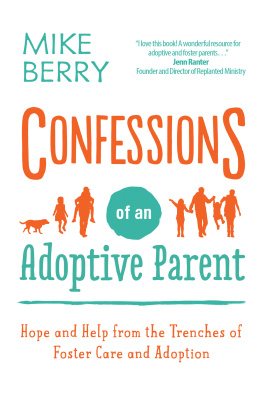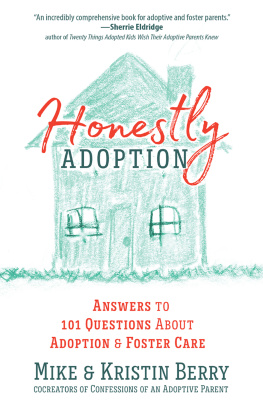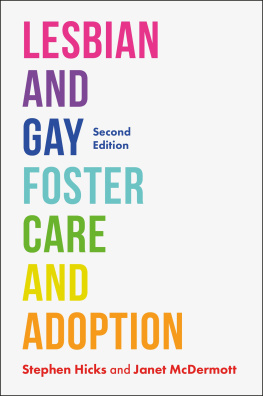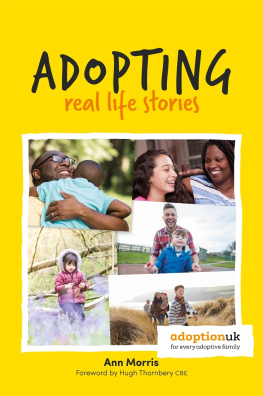Copyright 2015 by Catherine Marshall.
All rights reserved. No part of this publication may be reproduced, stored in a retrieval system, or transmitted in any form or by any means, electronic, mechanical, photocopying, recording, or otherwise, without the prior written permission of the copyright holder, except brief quotations used in a review.
The names of most of those mentioned in this book have been changed.
Design by Meadowlark Publishing Services.
Illustrations of cake and recipe by the author.
Cover illustration: iStockphoto.com /artist: Floortje
Published by Capbuilders Publishing.
www.catmarshall.net
Manufactured in the United States of America.
ISBN 978-0-9850561-3-1
Published 2015
Ms. Marshall has written a riveting book that details her travails adopting two children. Social Services numerous omissions of information, changes of biological parents rights, and failure to support the adoptive familys needs set the stage for a scary story that reads like fiction but, unfortunately, is not.
As a Licensed Marriage and Family Therapist specializing in adoption, I believe Ms. Marshalls book is unique but, unfortunately, the story of her adoption experience is not. The countrys adoption policy is broken, wreaking havoc on many adoptive families. Kudos to Ms. Marshall for her relentless determination to defend her new family.
June Mikkelsen, licensed marriage and family therapist specializing in adoption
Catherine Marshalls openhearted and honest account of foster parent adoption is the first authentic report of the truth behind our broken foster care system, which fails young children most in need of parenting. Catherine tells her own story of the doubts, risks, and hopes that go into adoption of troubled foster children, and the morning-after realization of taking on so much more than she ever imagined. Her fair-minded report of her fight for her childrens future somehow comforts my wife, Annie, and me in our frustration and grief at this system that stripped our foster daughter of her best chance for a good life.
Bill Baker, former foster parent
I was captivated by Catherines story. It should be required reading for all prospective parents of foster kids. My own experience was similar. I expected that giving a child a loving, stable environment would ensure she would become a happy adult. Not so. Its much more complicated than that.
Alice Bonner, former foster parent
CONTENTS
PREFACE
T he Easter Moose is not a how-to manual for those thinking about adopting children through foster care. Nor is it a cautionary tale. Many of the troublesome conditions plaguing foster adoption in the late 1980s and early 1990s were remedied by regulations. It is not a vendetta against social services. While there were difficulties with certain social workers and the court system, the county agency provided the necessary financial support for the childrens special needs. This story is also not a demonstration of therapeutic parenting. Little was known about attachment disorder at that time and mistakes were made.
I wrote The Easter Moose to tell a story that is rarely told. When I shared my experiences with other foster and adoptive parents, I was touched by how they had similar experiences and were haunted by feelings of frustration, loss and failure. Many foster and adoptive parents continue to suffer with guilt because their efforts did not result in happy-ever-after endings.
Like many foster-adopt parents of older children, I first believed nurture would triumph over nature. Adoption and foster care memoirs tend to reinforce that notion. Many popular books focus on the stories of successful adults who, by their own will and determination, overcame horrifying foster care experiences. There are also a few wonderful accounts of foster or adoptive parents navigating the hurdles of foreign adoption or raising children with special needs. While these memoirs are inspiring, I believe a different, more common experience is worth sharing.
The last thing I want is to discourage foster adoption. In the U.S., over 107,000 foster children are ready for adoption. Foster-adoption continues to be relatively low cost compared to adopting internationally and many foster adoption agencies provide financial support. At the end of this book there is a list of foster care and adoption resources you might find useful.
I hope it doesnt spoil anything to say there is no tidy ending to my memoir. My children are now raising their own children and facing the trials of daily life, shadowed by their childhood experiences. They have accomplished a lot, in spite of their rough start. They are my heroes and someday they may tell their own stories. Their names have been changed in this memoir to protect their privacy.
Finally, I hope this story provides the reader with a better understanding of the experience of some foster parents. Some of you may find comfort, and maybe a dose of forgiveness and acceptance. The Easter Moose is for all parents who feel they have failed their children. In the end, we may never know the full affect our parenting had, and, at some point we must say to ourselves, we did the best we could.
ACKNOWLEDGMENTS
I am deeply grateful for the support of my fellow writers of Mendocino including my teacher, Norma Watkins, who demonstrated what creative nonfiction is all about, the volunteers who run the annual Mendocino Coast Writers Conference and the members of my writers group, Bill Baker, Orah Young, Michela Conti, Willow Hay-Arthur, Gloria Schoofs Jorgensen and Sue Gibson. Without these folks prodding and encouraging, I would have given up. I thank my partner and soulmate, Steve, who supported this writing with his infinite patience. My friends and editors, Sheridan and Stan of Meadowlark Publishing Services, have done it again with their professionalism and grace. I appreciate and continue to be in awe of my children who beat the odds and now thrive with families of their own.
For my children
THE SIBLING GROUP
I studied the Polaroid in my hand. The little girl wore a cornflower blue sun dress and white sandals, and her short, baby-fine blond hair framed her chubby face. She grinned as if someone had coached her to say cheese. I knew she was three, but her wide blue eyes and baby fat made her look younger. She sat on an ottoman and a little boy stood beside her, his hand firmly on her shoulder like he was trying to make sure she stayed put. He wore an orange matching shorts-and-shirt outfit that looked like something a little girl would wear. His hair was light brown, parted and plastered down. Though he was six, he was small and thin and bore the serious expression of someone with a lot on his mind.
I handed the photo to my husband, Michael. The social worker in charge of foster placement, Louise, sat across from us in our family room. She looked like shed dressed in a hurry: rumpled clothes and tangled hair. A photo album containing pictures of other children available for adoption lay next to her on the loveseat. We all ignored the buzzing of the pager in the large purse at her feet.
Why do you think we would be a good match for these two? Michael asked. I wondered about this as well. To be considered for the Department of Social Services Foster-Adopt program, we had completed an extensive application listing our education, job experience, hobbies, and the languages we spoke. The agency had rejected our earlier application to adopt a baby because Michael, at forty-three, was considered too old. Something must have been right for DSS to believe we were eligible to adopt what they called a sibling group of older children.

